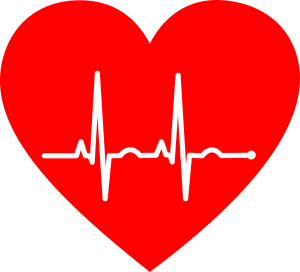Atrial fibrillation, also known as AFib, is the most common type of serious heart arrhythmia. While some people might never experience any symptoms accompanying AFib, others might end up with serious health complications, including stroke. In fact, according to the CDC, more than 450,400 hospitalizations with AFib as the primary diagnosis are reported each year in the US. But there are multiple treatment options available for AFib; it’s important to know what they are, so you can find out which will suit your specific needs best.
Atrial Fibrillation & What It Does To Your Body
Atrial fibrillation typically develops in the upper chambers of your heart. If you are in AFib, it means that your heart’s electrical system isn’t working as it should, because your electrical impulses have become chaotic. Your SA node, which generates an electrical signal that causes the upper heart chambers to contract, isn’t directing your heart’s electrical rhythm. Instead, many different impulses are rapidly firing at the same time, causing a chaotic rhythm.

There are three main types of atrial fibrillation:
- Paroxysmal AFib lasts less than one week and usually clears up on its own without treatment.
- Persistent AFib lasts more than one week and requires treatment.
- Long-standing persistent AFib lasts more than a year and is sometimes difficult to treat.
You have a higher risk of developing AFib if you have any of the following conditions:
- Obesity
- Type 2 diabetes
- Heart failure
- Coronary artery disease
- Congenital heart disease
- Lung diseases
- Sleep apnea
- Hyperthyroidism
- High blood pressure
Treatment Options
There are multiple treatment options available for AFib, including:
Medications
There are various types of medications that can help treat AFib, like rate control medications, which prevent the ventricles from beating too fast. There are also rhythm control medications, which help your heart beat in a normal rhythm, and are used to maintain the heart’s rhythm with no arrhythmias. In addition, blood thinners can reduce the risk of blood clots and stroke. Rate control medication is generally the first line of treatment for AFib, since it controls the heart rate without changing its rhythm, helping to bring your heart rate to a normal level.
Surgeries
Surgery is another option that can help regulate your heartbeat. Surgical options include:
- Electrical cardioversion electrically “resets” your heart rhythm using low-energy shocks.
- Pulmonary vein ablation uses catheters to deliver energy outside and around your pulmonary veins.
- A permanent pacemaker might be inserted if you have a slow heart rate, but this is usually only done if you have another arrhythmia in addition to AFib.
- Left atrial appendage closure is a procedure that reduces your risk of blood clots and stroke.
- The MAZE procedure creates scar tissue that helps your heart’s electrical impulses travel in the right path., and has a high success rate.
Affordable Coverage
So, while AFib can cause serious complications, there are multiple treatment options that can help keep this condition under control. They can be expensive, though, so it’s important to have comprehensive health insurance.
The best way to find a plan that suits your needs is to work with a licensed agent who is familiar with all available plans. EZ can help you in your search for comprehensive coverage, since we offer a wide range of health insurance plans from top-rated insurance companies in every state. And because we work with so many companies, and can offer all of the plans available in your area, we can find you a plan that saves you a lot of money – even hundreds of dollars – even if you don’t qualify for a subsidy. There is no obligation, or hassle, just free quotes on all available plans in your area. To get free instant quotes, simply enter your zip code in the bar above, or to speak to a local agent, call 888-350-1890.




